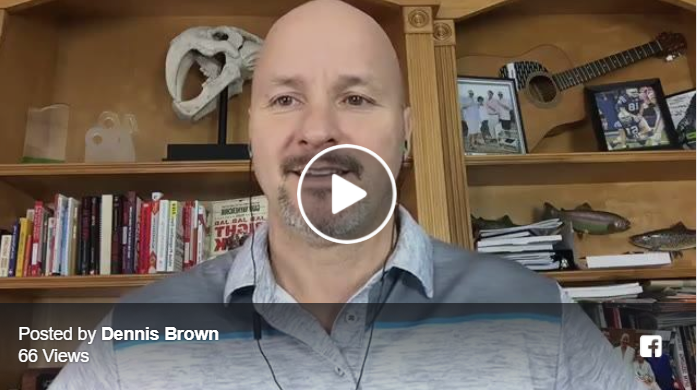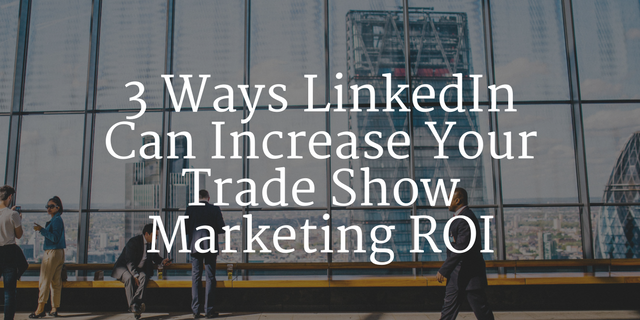Like anything in life or business there is always a right and a wrong way. LinkedIn is not different so today I am going to share with you 10 mistakes to avoid if your goal is to leverage LinkedIn and social selling to get more clients.
So here we go..
1. Using your job title for your headline
I’ve said it before and I’ll say it again: if you are an entrepreneur or have a job, your headline is not the place to show off your job title, because no one cares. Sorry if that hurts your feelings but its true. Your LinkedIn headline is one of the most valuable pieces of real estate on your entire profile and needs to be treated as such. It needs to speak directly to your target market. Your headline needs to position you as a thought leader, an expert and/or a trusted resource. This simple change will attract your target market to you in a way that your job title could never do.
2. Using LinkedIn like Facebook
Let’s face it people, LinkedIn and Facebook are two very different animals and because of that they need to be treated as such. LinkedIn is a professional network that focuses on business and professional content, conversations and insights. Facebook on the other hand is heavily focused on personal interactions between family and friends that are much more casual in nature. Of course people do business on Facebook, but one thing that people on LinkedIn can’t stand is when you try to do Facebook type posts on LinkedIn. I am confident that the most recent Facebook phenom, the Chewbacca lady, would not have had as warm of a reception on LinkedIn as she did on Facebook. 🙂
3. Using a bad profile photo
LinkedIn is filled with bad profile photos, ranging from poorly sized to horribly inappropriate. I think this relates back to #2 which we just covered where people forget that LinkedIn is not Facebook. With that in mind, I have good news and bad news. The bad news is you need to use a professional photo. No, you don’t need to be wearing a suit and tie, but it does need to represent what would be appropriate if you were going out to dinner with your boss or, better yet, a client. The good news is that you don’t need to spend a fortune getting professional photos taken, although not a bad idea. You can typically get away with having someone in your office take a decent shot of you at the office.
4. Not getting recommendations
There’s an old saying that goes something like this: “When you say it, it’s bragging. When someone else says it, it’s proof!” Thus, the importance of getting recommendations on LinkedIn. In my opinion, recommendations are one of the most important elements of a good LinkedIn profile. Nothing can position you as a thought leader or expert better than 10-20 recommendations that tell the world what a pleasure it was to work with you and how you delivered beyond their expectations.
5. Sending generic invitations
This one drives me crazy! And while some people unknowingly make this mistake, I have to put part of the blame on LinkedIn for even allowing generic invitations to be sent. From now on, please take a minute to customize any and all future LinkedIn invitations. The good news is the invite doesn’t need to be lengthy and shouldn’t exceed 300 characters. It’s important to mention where and when you met, any in connections you have in common, or other things you may have in common, like groups, schools or interests, just to name a few.
6. Leading with your pitch
OK, so let me explain what I mean by “leading with your pitch.” It starts out when you get a seemingly harmless connection request and you accept. And within hours they send you back a message pitching their product or service or asking you to join them on a call. Sound familiar?
Let me be clear when I say this: NO ONE likes that person. So by doing that, you automatically eliminate the opportunity to do business with that person. Lead with value, develop a relationship and stop treating it like speed dating and your sales pipeline will over flow.
7. Not posting updates regularly
Posting regular updates is an easy, free and effective way to stay on the minds of those within your network. I think the biggest reason why people do not share or post regular updates is because they do not get tons of engagement. First, let me point out the obvious: LinkedIn is not Facebook, so do not expect the same type of engagement. Secondly, you need to consider the type of information you are posting. You need to curate and customize your content to your target market and not fall victim to deadly “comparitus” disease when it comes to engagement. Consistency and frequency are equally as important as engagement.
8. Not replying to messages quick enough
A few months ago, I was meeting with the Vice President of Sales for a new LinkedIn consulting client and she admitted she has not logged in and checked or responded to her LinkedIn messages in months. It was like nails on a chalkboard to me, but all too often this is the case. I urge you to take a couple of minutes daily, or at least twice a week, to respond to messages from your LinkedIn network. Why? Because once you understand how to attract clients using LinkedIn, you regularly are sought out by your target market to provide your expertise. Responding in a timely manner is critical to transitioning to an offline conversation.
9. Not incorporating multimedia into your summary/experience
The old saying “a picture is worth a thousand words” could never be more true than in social media, and LinkedIn marketing is no different. You may or may not know this, but LinkedIn allows you to incorporate multimedia into your summary, experience and education sections of your profile. Currently, LinkedIn supports hundreds of content providers in a variety of formats including like photos, videos, audios, slide shares and even products. With the availability of multimedia, standing out from the crowd has never been easier!
10. Not engaging with your target market
First, it’s important to recognize that LinkedIn is a social media platform and while the conversations lean heavily towards business, it is still important to engage your target market in conversation. The term engagement is thrown around a lot these days, and in its most basic form it means having a two-way conversation. Two way conversations on social media typically start in the form of likes, shares, comments and/or mentions. This means that when you or your target market posts an update on social media, they are typically doing it to illicit a response…right? Based upon that simple premise, have you ever asked what could happen if you started a conversation with people that engaged your content. Or, equally as valid, what if you engaged with the content of your target market? Two-way engagement is the key to developing relationships and converting conversations from online to offline.
Did this help you? If so, please take a moment to comment below and SHARE on Facebook, Twitter or LinkedIn!
P.S. If you’re interested in getting more leads, more customer and more profits and are curious about what LinkedIn marketing and social selling can do for your business, click here to schedule a free 30 minute LinkedIn marketing & social selling strategy call.
Cheers,
Dennis Brown
“Stop the madness. There’s a better way!”
LinkedIn & Social Selling Consultant, Trainer, Speaker
Connect with me on LinkedIn!
Follow me on Twitter!
Do you Facebook?







